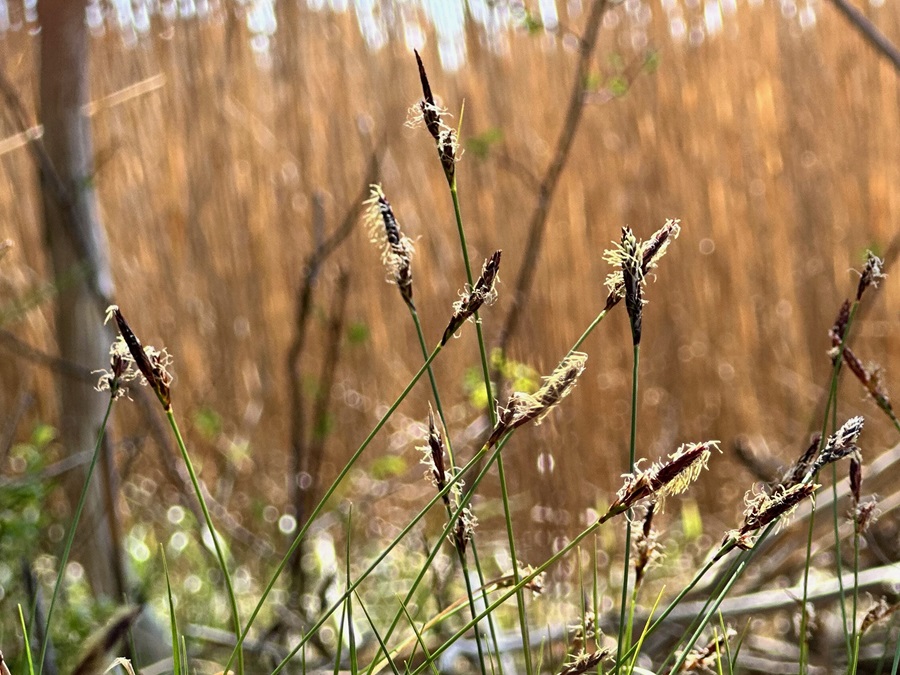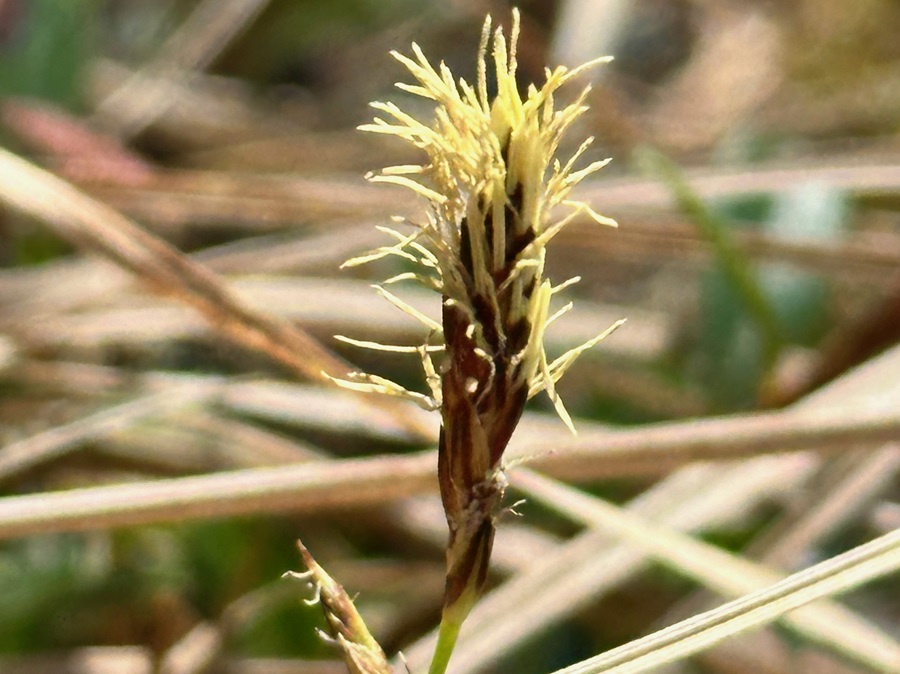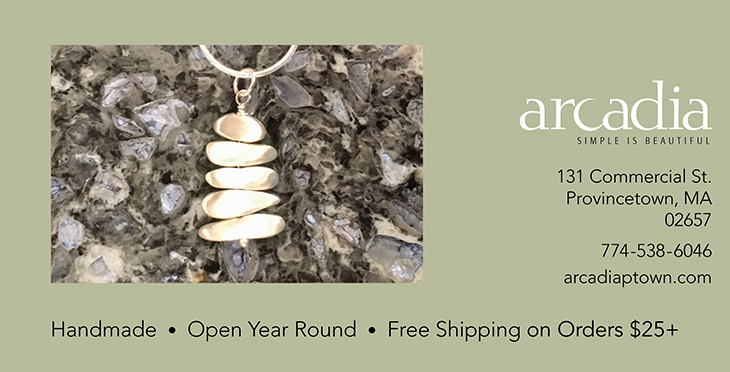
Rising (relatively) high on triangular stalks, the male flowers of Carex pensylvanica, a grass-like sedge that can be found softening the Outer Cape’s oak-pine forest floors, are jutting out their pale-yellow stamens in the wind this week, allowing pollen to catch a ride and cruise for any females in bloom. The pistillate inflorescences they seek are located directly below the males; each flower stalk has one to three of these smaller structures, out of which stretch white, stringy pistils looking to bring those hitchhikers in. 
While not needing their help for reproduction, Pennsylvania sedge is nonetheless important to native pollinators; it functions as a larval host plant for dozens of moth and butterfly species. And because it can thrive in both sun and dry shade, C. pensylvanica has become an important alternative to the traditional water-intensive and ecologically barren turf lawn.



